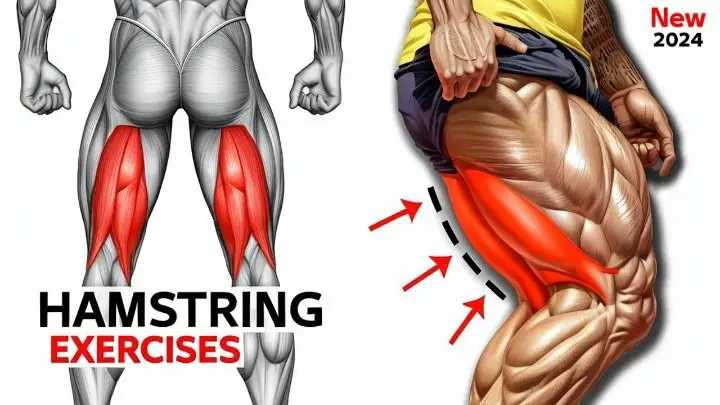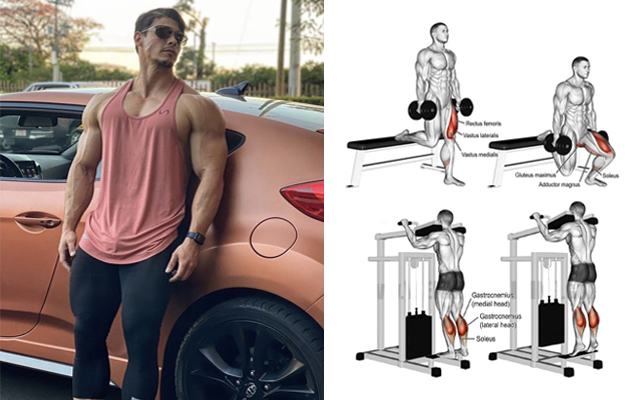When it comes to building strong, defined legs, squats are often considered the ultimate exercise. They primarily target the quadriceps—the group of four muscles at the front of your thighs. But not all squats are equally effective at working these key muscles. Whether you’re new to the gym or a seasoned fitness enthusiast, learning to squat in a way that maximizes quad engagement can significantly improve your lower body workouts and lead to impressive gains.
In this article, we’ll break down how to squat to really hit your quads. We’ll cover everything from foot positioning to depth and range of motion, ensuring you get the most out of this essential exercise. You’ll also learn about common mistakes to avoid, the best squat variations for targeting your quads, and tips for progressing safely and effectively. By the end of this guide, you’ll have all the knowledge you need to squat your way to stronger, more powerful quads.
Quadriceps Anatomy
Understanding the anatomy of the quadriceps is crucial for effectively targeting and activating these muscles during squats. The quadriceps, commonly known as the “quads,” are a group of four muscles located at the front of the thigh. These muscles are essential for knee extension and play a significant role in various lower body movements, including squats. The four muscles that make up the quadriceps are:
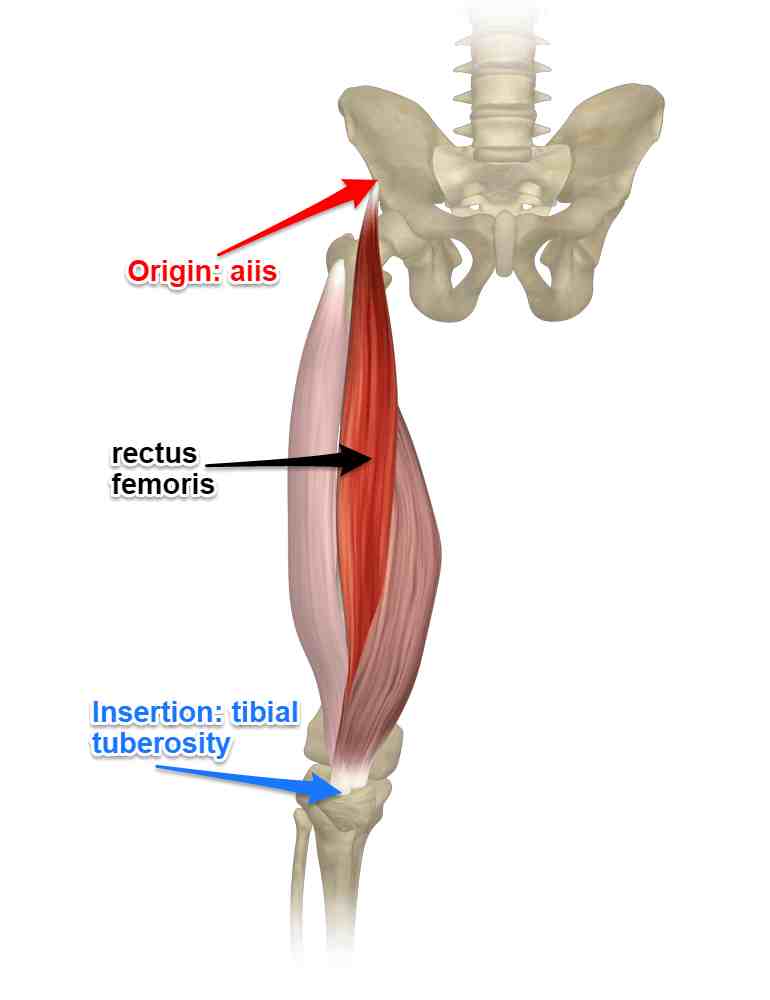
- Location: Runs down the middle of the thigh.
- Function: Extends the knee and flexes the hip.
- Unique Feature: It is the only quadriceps muscle that crosses both the hip and knee joints, making it unique in its dual function.
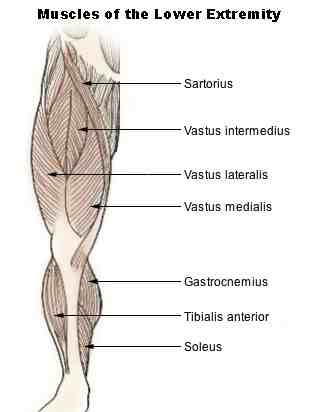
- Location: Situated on the outer side of the thigh.
- Function: Extends the knee.
- Unique Feature: It is the largest of the four quad muscles, contributing significantly to the shape and size of the thigh.
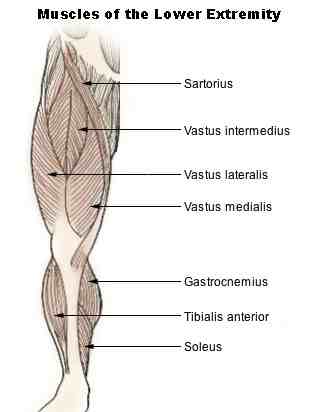
- Location: Located on the inner part of the thigh.
- Function: Extends the knee.
- Unique Feature: Known for its teardrop shape near the knee, it plays a crucial role in stabilizing the patella (kneecap).
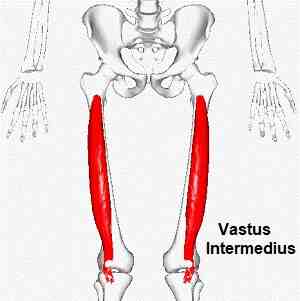
- Location: Positioned between the vastus lateralis and vastus medialis, underneath the rectus femoris.
- Function: Extends the knee.
- Unique Feature: It lies deep within the thigh and is not visible superficially, but it is essential for overall knee extension strength.
Function in the Squatting Movement
When performing a squat, the quadriceps play a central role in the following ways:
- Knee Extension: As you descend into a squat, the quadriceps control the movement by eccentrically contracting to lower your body in a controlled manner. Upon ascending, they concentrically contract to extend the knee, pushing your body back to the starting position.
- Stabilization: The quads, particularly the vastus medialis, help stabilize the knee joint and maintain proper alignment, which is crucial for preventing injuries.
- Force Production: The quads generate a significant amount of force needed to lift your body weight (and any additional weight) from the squat position, making them a primary muscle group for strength in this movement.
SHOP FOR THE SQUAT MACHINE ON AMAZON
Understanding the anatomy and function of the quadriceps helps in optimizing squat technique, ensuring effective muscle activation, and achieving better overall results in strength and fitness.
Foot Positioning
The position of your feet during squats plays a crucial role in determining which muscles are activated more intensely. Here’s how different aspects of foot stance—width and angle—affect quad activation:
1. Foot Width
Narrow Stance Squats:
- Description: Feet are placed closer together, typically hip-width apart or narrower.
- Quad Activation: A narrower stance places a greater emphasis on the quadriceps. This is because the knees tend to travel further forward over the toes, increasing the demand on the quads to extend the knee.
- Muscle Balance: While the quads are more engaged, the narrower stance can reduce the involvement of the glutes and hamstrings.
Wide Stance Squats:
- Description: Feet are placed wider than shoulder-width apart.
- Quad Activation: In a wider stance, the hips are more externally rotated, which can shift some of the load from the quads to the glutes, hamstrings, and adductors. While the quads are still active, the distribution of the workload across more muscle groups can mean slightly less focus on the quads compared to a narrow stance.
- Muscle Balance: A wider stance generally recruits more of the posterior chain (glutes and hamstrings) and inner thigh muscles.
2. Foot Angle
Toes Pointed Forward:
- Description: Feet are positioned with toes pointing straight ahead or only slightly angled out (less than 15 degrees).
- Quad Activation: Pointing the toes forward increases the stress on the quads because it encourages a more knee-dominant movement pattern. This setup can help isolate the quads more effectively, especially when combined with a narrow stance.
- Muscle Balance: This position can be more demanding on the knees and requires good ankle mobility to maintain proper form.
Toes Pointed Outward:
- Description: Feet are positioned with toes pointing outward at a 20-30 degree angle or more.
- Quad Activation: Turning the toes outward allows for a more hip-dominant movement pattern, which can decrease the emphasis on the quads slightly while increasing the engagement of the glutes and adductors. However, the quads are still significantly involved, especially if the depth of the squat is increased.
- Muscle Balance: This position can be more comfortable for individuals with limited ankle mobility or hip flexibility and can distribute the load more evenly across various muscle groups.
3. Combining Width and Angle
Narrow Stance with Toes Forward:
- Impact: Maximizes quad activation. Ideal for those specifically targeting quad development.
- Considerations: Requires good ankle and hip mobility to maintain proper form and avoid knee strain.
Wide Stance with Toes Outward:
- Impact: Provides a more balanced activation of the quads, glutes, hamstrings, and adductors. Suitable for overall leg development and those with mobility limitations.
- Considerations: Easier to maintain proper form for individuals with broader hips or limited flexibility.
Practical Tips
- Experiment with Stance: Individuals should experiment with different stances to find what feels most effective and comfortable for their body type and mobility.
- Form and Depth: Regardless of stance, maintaining proper form (upright torso, knees tracking over toes, neutral spine) is crucial to avoid injury and maximize muscle activation.
- Progression: Gradually adjust stance and load to progressively challenge the quads while maintaining safety.
SHOP FOR THE ADJUSTABLE DUMBBELL SET ON AMAZON
By understanding and adjusting foot stance and angle, lifters can more effectively target the quads during squats, tailoring their workouts to their specific goals and anatomical considerations.
Barbell vs. Bodyweight Squats
Barbell Squats
Barbell squats allow for the use of additional weight, which significantly increases the load on the quadriceps, leading to greater muscle activation and strength gains.
The added weight can help some individuals achieve a deeper squat, enhancing quad activation, especially in the lower portion of the movement.
Pros:
- Strength Development: The added resistance from the barbell helps in building substantial quad strength and muscle mass.
- Progressive Overload: Barbell squats make it easier to progressively increase the weight, allowing for continuous muscle adaptation and growth.
- Variety of Squat Types: Different barbell squat variations (e.g., front squats, high-bar squats) can target the quads differently, providing comprehensive quad development.
Cons:
- Risk of Injury: Improper form or excessive weight can increase the risk of injury to the knees, back, and other joints.
- Equipment Requirement: Barbell squats require access to a barbell, weights, and often a squat rack, which might not be available to everyone.
- Technical Skill: Proper form is crucial for barbell squats, and beginners might need guidance to avoid incorrect technique and potential injury.
Bodyweight Squats
Without additional weight, bodyweight squats rely solely on the individual’s body weight for resistance, which might limit quad activation compared to weighted squats.
Bodyweight squats allow for greater emphasis on perfecting form, which is essential for effective quad engagement.
Pros:
- Accessibility: Can be performed anywhere without the need for equipment, making it convenient for all fitness levels.
- Lower Risk of Injury: Less risk of injury compared to barbell squats due to the absence of heavy weights, making them safer for beginners.
- Foundation Building: Great for building foundational strength and preparing the body for more advanced movements like barbell squats.
- Versatility: This can be easily incorporated into various workout routines, including high-intensity interval training (HIIT) and circuit training.
Cons:
- Limited Resistance: The resistance provided by body weight alone may not be sufficient for significant strength gains in more advanced athletes.
- Plateau Potential: Progression can be challenging, and individuals might hit a plateau in muscle development without adding external resistance.
- Less Muscle Mass Gain: Generally, bodyweight squats might not stimulate as much muscle hypertrophy (growth) in the quads compared to weighted squats.
SHOP FOR THE RESISTANCE BAND ON AMAZON
Both barbell squats and bodyweight squats can effectively activate the quads, but they serve different purposes and benefits.
Barbell Squats are ideal for those looking to significantly increase quad strength and muscle mass, provided they have access to the necessary equipment and have mastered the proper form to avoid injury.
Bodyweight Squats are perfect for beginners, those focusing on perfecting squat form, and individuals seeking a convenient and low-risk exercise that can be done anywhere.
Common Mistakes and Corrections
Here are some common mistakes people make when squatting that can reduce quad activation, along with tips on how to correct them to optimize quad engagement:
Comparing Squats and Split Squats
1. Incorrect Foot Position
- Mistake: Feet are too wide or too narrow, or toes are pointed too far outward or inward.
- Correction: Position your feet shoulder-width apart with toes slightly pointed outward (about 15-30 degrees). This stance promotes better quad engagement and maintains balance.
2. Knees Caving In
- Mistake: Knees collapse inward (valgus collapse) during the squat.
- Correction: Focus on pushing your knees outward as you squat down. This can be aided by imagining spreading the floor apart with your feet. Strengthening the hip abductors and glutes can also help prevent this issue.
3. Excessive Forward Lean
- Mistake: Leaning too far forward shifts the emphasis away from the quads and onto the lower back and hips.
- Correction: Keep your chest up and back straight. Engage your core and look forward, not down. Practicing front squats can help improve your posture as they naturally encourage a more upright position.
4. Not Squatting Deep Enough
- Mistake: Performing shallow squats (not reaching parallel or below) reduces quad activation.
- Correction: Aim to squat until your thighs are at least parallel to the ground. If flexibility is an issue, work on ankle mobility and hip flexibility with targeted stretches.
5. Improper Weight Distribution
- Mistake: Letting the weight shift to the heels or toes, rather than keeping it evenly distributed across the feet.
- Correction: Distribute your weight evenly across your midfoot. Ensure your entire foot, especially the balls of your feet and heels, remains in contact with the ground throughout the movement.
6. Insufficient Core Engagement
- Mistake: A weak core can lead to instability and improper form, reducing quad activation.
- Correction: Engage your core by bracing your abdominal muscles before you squat. Imagine preparing to take a punch in the stomach to maintain tightness and support.
7. Poor Breathing Technique
- Mistake: Holding your breath or breathing incorrectly during the squat.
- Correction: Practice proper breathing techniques. Inhale deeply as you descend into the squat and exhale as you rise back up. Proper breathing helps stabilize the core and maintain form.
8. Overloading the Barbell Too Soon
- Mistake: Using too much weight before mastering proper form can lead to poor technique and reduced quad activation.
- Correction: Start with lighter weights to focus on form and gradually increase the load as you become more comfortable and confident with the movement.
SHOP FOR THE FOAM ROLLER ON AMAZON
By addressing these common mistakes and implementing the corrective tips, individuals can significantly enhance quad activation during squats, leading to more effective workouts and better results over time.
Quad-Dominant Squat Variations
Quad-dominant squat variations are specifically designed to target and activate the quadriceps muscles to a greater extent. These variations often adjust factors such as stance, bar placement, and range of motion to emphasize the quads over other muscle groups. Here are some effective quad-dominant squat variations:
Front Squats
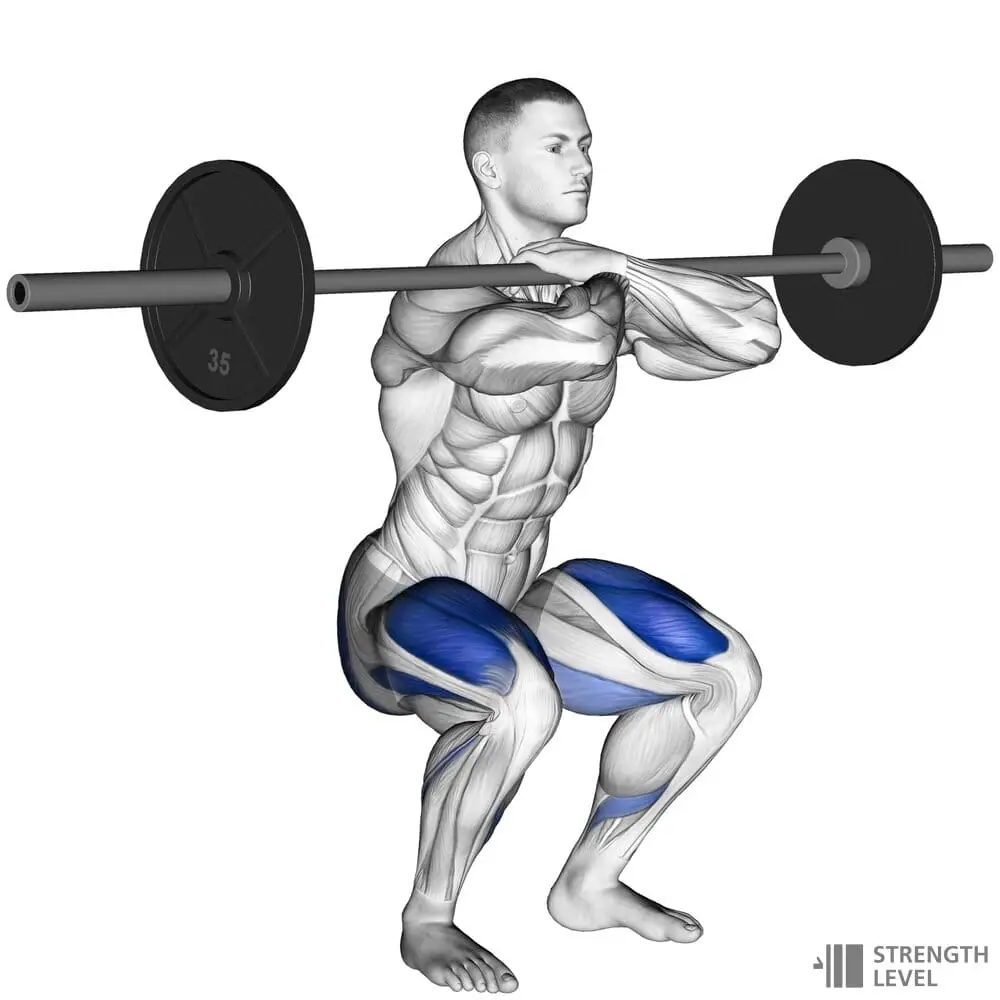
Involves holding a barbell in front of the shoulders, which shifts the center of gravity forward, placing greater emphasis on the quads.
How to do: Stand with feet hip-width apart, lift the barbell onto the front shoulders, squat down by bending at the knees and hips while keeping the torso upright.
Front squats directly target the quads due to the upright torso position and the need to keep the bar stable in front.
High-Bar Back Squats

Similar to traditional back squats but with the bar positioned higher on the upper traps, promoting a more upright torso and increased quad activation.
How to do: Position the barbell across the upper traps, descend into a squat by bending the knees and hips while maintaining an upright posture.
This exercise places a significant load on the quads due to the more vertical torso angle and emphasis on knee flexion during the movement.
Hack Squats
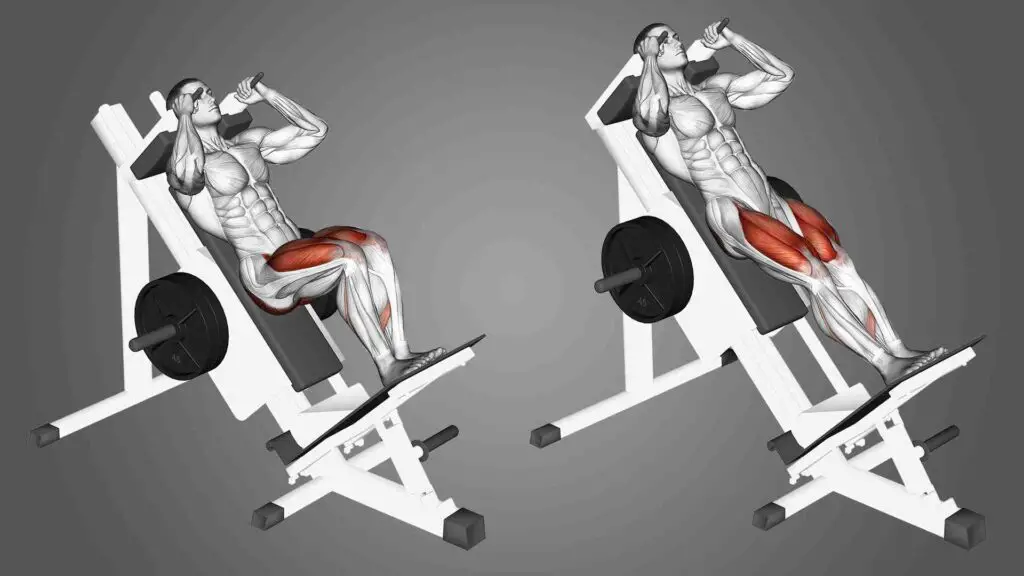
Utilizes a hack squat machine where the body is positioned at an angle, with the shoulders and back resting against pads, targeting the quads with less stress on the lower back.
How to do: Position yourself in the hack squat machine, place feet shoulder-width apart on the platform, push through the heels to extend the knees and return to the starting position.
The machine’s design keeps the torso upright and stabilizes the movement, effectively isolating and loading the quads throughout the exercise.
Sissy Squats
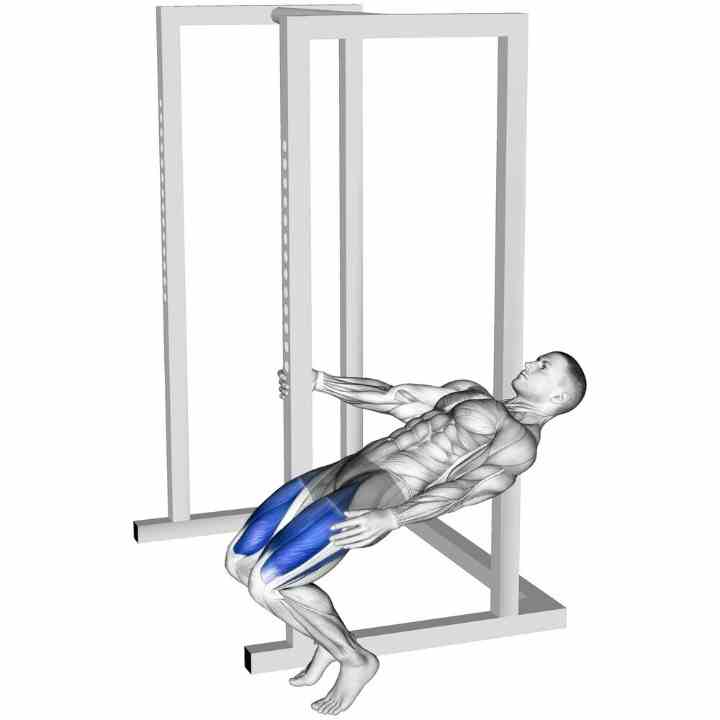
An isolation exercise for the quads involves leaning back with the knees flexed, emphasizing knee extension to target the quads without loading the spine.
How to do: Stand with feet hip-width apart, hold onto a support for balance, lean back while bending the knees, then extend the knees to return to the starting position.
Comparing Hack Squats and Leg Presses
Requires maximal contraction of the quads to extend the knees against gravity and body weight, making it a highly effective quad-focused exercise.
Pistol Squats
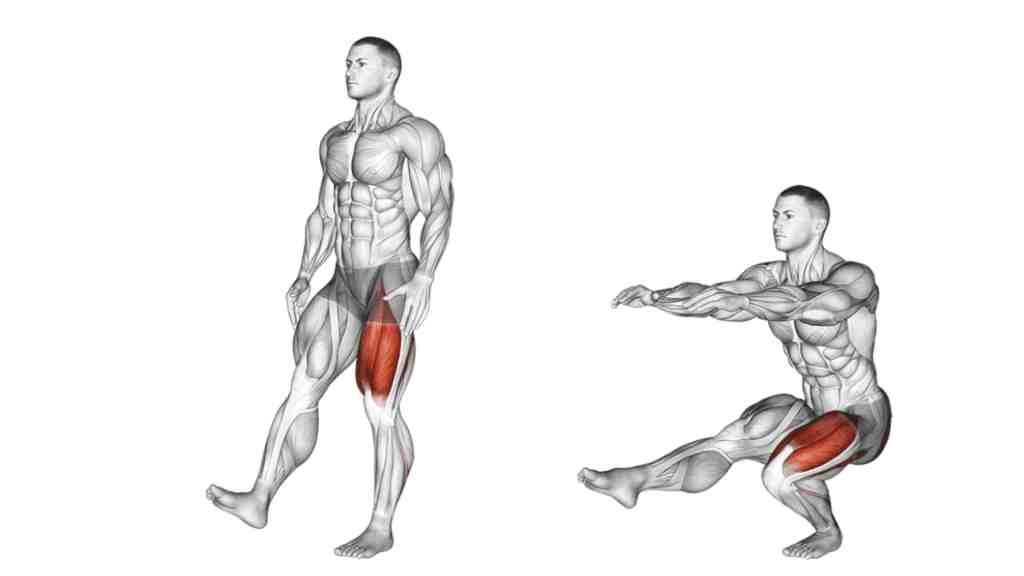
A challenging single-leg squat that requires strength, balance, and flexibility, emphasizing quad activation throughout the movement.
How to do: Stand on one leg, extend the other leg forward, squat down by bending the knee of the standing leg while keeping the other leg extended, then return to standing.
Forces the quads to work intensely to control the movement and stabilize the body throughout the exercise, particularly in the standing leg.
Step-Ups
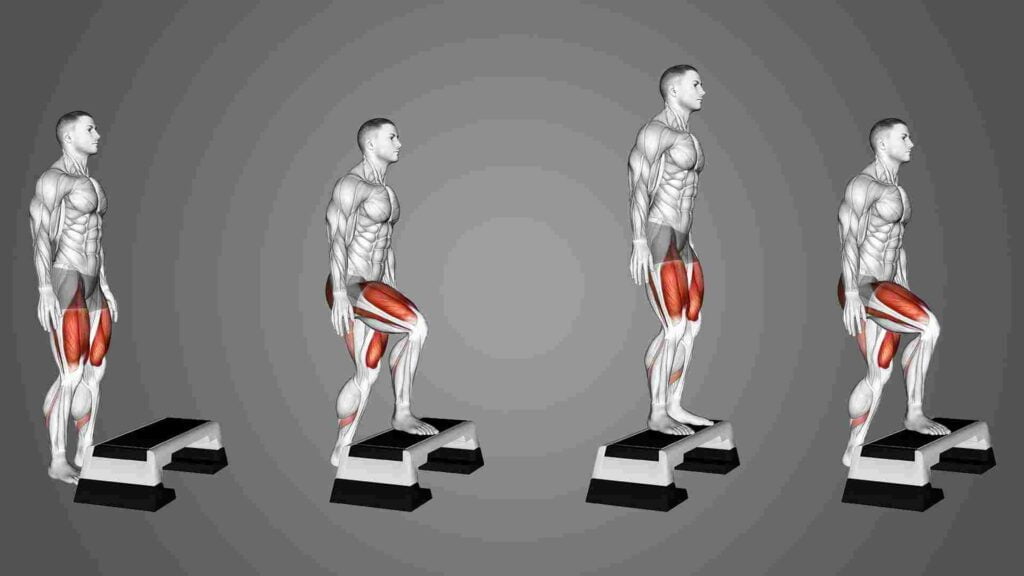
It involves stepping onto a raised platform or bench, lifting the body using primarily the quadriceps, and emphasizing single-leg strength and stability.
How to do: Stand in front of a sturdy bench or platform, step onto it with one foot, drive through the heel to lift the body up, then lower back down with control.
Concentrates on the quads as they work to lift the body weight onto the platform and control the descent, especially in the leading leg.
Overhead Squats
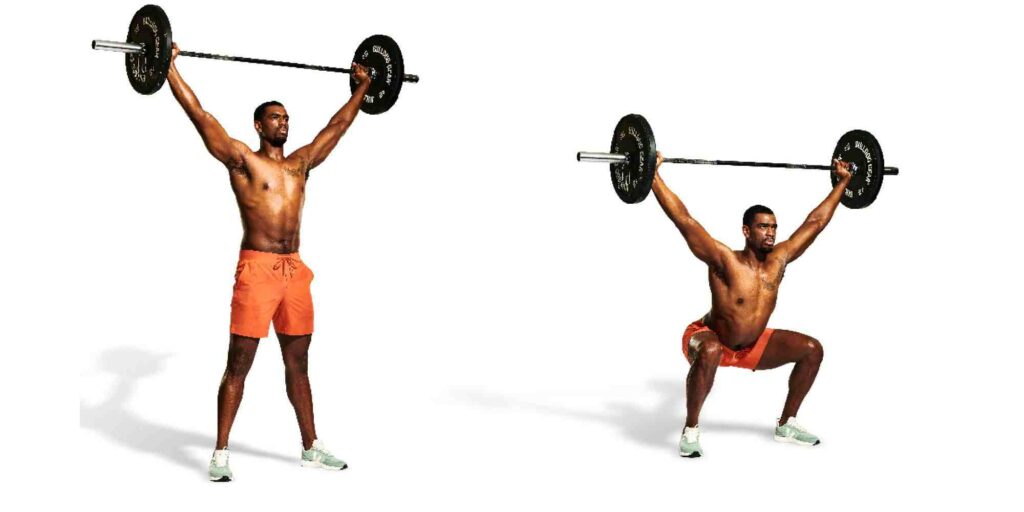
Combines a squatting motion with an overhead press, challenging stability, mobility, and core strength while still engaging the quadriceps.
How to do: Hold a barbell or dumbbell overhead, squat down by bending the knees and hips while keeping the arms extended, then return to standing while maintaining the overhead position.
Engages the quads dynamically throughout the movement due to the squatting motion and the need to stabilize the weight overhead, promoting overall quad strength and coordination.
These variations offer diverse ways to target and develop the quadriceps, catering to different fitness levels and goals.
Training Frequency and Volume
The frequency and volume of squatting to effectively target and develop the quadriceps (quads) depend on several factors including individual fitness levels, goals, and overall workout regimen.
For most individuals looking to prioritize quad development, incorporating squats into their routine 2-3 times per week can be beneficial. This frequency allows for adequate stimulus and recovery without overloading the muscles excessively.
In terms of volume, beginners may start with 3-4 sets of squats per session, focusing on mastering form and gradually increasing weight over time. Intermediate to advanced lifters can handle higher volumes, ranging from 4-6 sets per session, adjusting weight and intensity based on their training goals—whether it’s hypertrophy (muscle growth) or strength gains.
Muscles Worked in Goblet Squats
It’s crucial to listen to the body and incorporate sufficient rest between squat sessions to prevent overtraining and allow for optimal muscle recovery. Additionally, varying squat variations and incorporating complementary exercises can further enhance quad development while reducing the risk of plateaus and boredom in training routines.
FAQs
Q 1. What is the optimal squat depth for maximum quad activation?
Ans. Deep squats where the thighs are at least parallel to the ground are generally recommended for optimal quad activation.
Q 2. How does foot positioning affect quad engagement during squats?
Ans. A narrower stance with toes slightly pointed out can target the quads more effectively.
Q 3. Can squat shoes or heel elevation change the dynamics of quad activation?
Ans. Yes, squat shoes or heel elevation can help maintain an upright posture, allowing for deeper knee flexion and increased quad engagement.
Q 4. Is it necessary to let the knees travel over the toes during squats for better quad activation?
Ans. Allowing the knees to track over the toes can increase knee flexion, which is crucial for engaging the quads during squats.
Q 5. What are some signs of inadequate quad activation during squats?
Ans. Difficulty in maintaining an upright torso, excessive forward lean, and inability to drive up from the bottom position may indicate inadequate quad activation.
Q 6. How can I incorporate front squats into my routine for better quad activation?
Ans. Front squats can be added as an accessory exercise or alternated with back squats to place more emphasis on the quads due to the forward center of mass.
Q 7. What role does eccentric loading play in quad activation during squats?
Ans. Eccentric loading during the descent of the squat helps to maintain control and tension in the quads, preparing them for the concentric action of knee extension.
Q 8. How can I ensure I’m engaging my quads before descending into a squat?
Ans. Engaging the quads by tensing them before descending can help maintain tension throughout the movement and improve muscle activation.
Conclusion
In conclusion, mastering the squat to activate your quads effectively involves understanding the nuances of technique, anatomy, and personal adaptation. By focusing on proper form, such as maintaining alignment, adjusting depth and stance, and engaging core muscles, you can maximize quad engagement while minimizing the risk of injury.
Whether you prefer barbell squats, bodyweight variations, or specialized exercises like front squats, the key lies in consistency, proper progression, and listening to your body’s cues for optimal results. Remember, a balanced approach that includes stretching, recovery, and gradual progression will not only enhance quad strength but also contribute to overall lower body stability and fitness.

Good day, and welcome to Fitthour. My name is Shubham Vijay, and I am a certified personal trainer and nutrition coach with 6 years of experience in the fitness industry. At Fitthour, we specialize in types of training, such as strength training, cardio, or HIIT, and our mission is to help clients achieve their fitness goals and improve their overall health.


